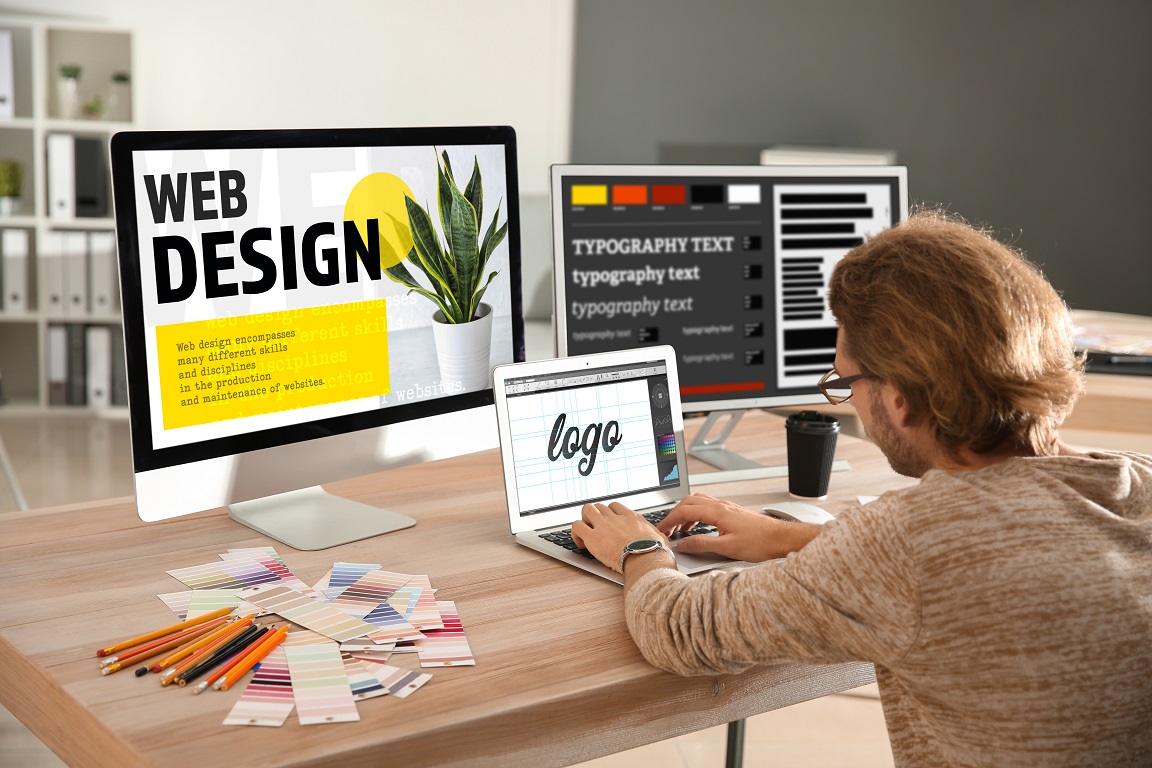The Relevance of User Experience in Effective Web Design Strategies
User experience (UX) offers as a cornerstone in reliable web design techniques. It forms how users engage with a website, affecting their complete satisfaction and likelihood of returning. A properly designed UX can enhance interaction via user-friendly navigating and responsive designs. Nevertheless, ignoring these aspects may lead to stress and boosted bounce rates. Recognizing the details of UX is essential for designers aiming to produce compelling digital experiences that reverberate with diverse audiences. What elements absolutely drive effective user engagement?
Understanding User Experience and Its Effect On Design
User experience (UX) is often regarded as a simple facet of web style, it fundamentally shapes how users connect with an internet site. UX incorporates all facets of the user's interaction, including functionality, availability, and overall contentment. A favorable UX cultivates engagement, encouraging customers to explore the website and return in the future. Alternatively, a negative experience can cause irritation, resulting in high bounce rates and lost possibilities for conversion.
Style elements like navigation, material, and layout company play essential functions in shaping this experience. Effective UX layout anticipates user demands and preferences, making sure that details is visually appealing and conveniently obtainable. In addition, understanding user actions with analytics can supply beneficial understandings, informing layout choices that enhance functionality. Ultimately, a complete understanding of UX permits designers to develop internet sites that not just bring in users yet likewise promote significant communications that line up with organization goals and user assumptions.
Secret Concepts of Efficient User Experience
Reliable user experience hinges on numerous vital principles that improve site functionality and interaction. Intuitive navigation layout, receptive layout fundamentals, and the importance of aesthetic power structure are essential elements that add to a smooth communication between individuals and web material. Understanding these concepts allows developers to produce even more accessible and user-friendly electronic environments.
Intuitive Navigating Design
User-friendly navigation design serves as a vital portal to their overall experience when users come across a web site. Reliable navigation permits users to effortlessly situate the information they seek, enhancing their communication with the website. Key concepts include clear labeling, logical organization, and consistent placement of navigating aspects. Tags must be simple, enabling users to predict the content they will certainly find. A well-structured power structure helps customers comprehend the relationship between various areas, assisting them with the web site perfectly. In addition, responsive food selections and quickly accessible links add to a fluid experience across devices. By prioritizing user-friendly navigating, developers can considerably reduce user frustration and increase engagement, inevitably promoting a positive perception of the website and its content.
Responsive Format Essentials
A well-structured navigation system naturally results in the need for a responsive format, which is crucial in today's diverse electronic landscape. A receptive design assurances that websites function flawlessly throughout various gadgets, including tablet computers, mobile phones, and desktops. This versatility boosts user experience by permitting web content to be visually systematic and quickly available, despite display size. Trick concepts of responsive design include fluid grids, flexible images, and media questions, which facilitate ideal viewing. Furthermore, focusing on touch-friendly aspects boosts communication on mobile phones. By executing a responsive layout, designers can suit customers' demands, lessen bounce prices, and increase interaction. Eventually, a well-executed responsive layout cultivates a favorable user experience, encouraging visitors to discover the website additionally.
Aesthetic Pecking Order Importance
Aesthetic pecking order plays a vital role in guiding users with a site, making sure that essential details catches their attention first. By strategically utilizing size, spacing, contrast, and shade, designers can produce a clear path for users to follow. Bigger elements often attract the eye, showing their importance, while contrasting colors can highlight contact us to activity. Additionally, regular alignment and group of related material enhance comprehension, making navigation instinctive. Efficient use visual hierarchy not just enhances functionality yet likewise sustains the overall aesthetic of the website, cultivating a positive user experience. When individuals can quickly identify one of the most crucial information, they are much more most likely to engage with the material, resulting in increased satisfaction and communication with the website.
The Function of Usability in Web Design
Functionality plays an important duty in web design, particularly through navigating simpleness and adherence to availability standards. Efficient navigating boosts user contentment by enabling site visitors to locate information swiftly and intuitively. Conference availability criteria guarantees that all customers, regardless of their capabilities, can properly communicate with the website.
Navigation Simpleness
Simpleness in navigation stands as a foundation of reliable web design, greatly influencing user experience. A streamlined navigating system permits users to locate details promptly and intuitively, lowering stress and improving fulfillment. Clear labeling and sensible framework are crucial elements, directing individuals easily through the web site. Repetitive web links or extremely complex menus can disorient users, resulting in boosted bounce prices. Furthermore, mobile responsiveness needs to be taken into consideration, making certain navigation stays straightforward across gadgets. Decreasing and focusing on necessary web pages clutter further sustains user interaction. Effective navigating not just fosters a favorable experience but likewise urges individuals to discover the website better, ultimately leading to greater conversion prices. Hereof, navigation simpleness works as a critical variable in the general effectiveness of web design approaches.
Ease of access Requirements
User interaction is significantly enhanced when internet sites adhere to ease of access criteria, guaranteeing that all customers, no matter their abilities, can browse and engage efficiently. Conformity with these requirements not only widens the audience yet also enhances overall user satisfaction. Easily accessible design includes functions such as message options for photos, keyboard navigation, and enough color comparison, which facilitate use by people with disabilities. In enhancement, carrying out these requirements can favorably impact seo (SEO) by boosting site framework and quality. As web design evolves, prioritizing availability comes to be important in fostering a comprehensive digital atmosphere. By accepting these standards, designers add to an extra fair web, inevitably driving user loyalty and involvement.
Significance of Responsive Style for User Involvement
As consumers increasingly access sites via a selection of tools, the relevance of receptive design comes to be vital for engaging customers efficiently. Responsive style assurances that a web site adapts effortlessly to various screen sizes, offering an excellent watching experience no matter the tool made use of. This versatility boosts user involvement by facilitating easier navigating and communication with web content.
When users encounter an internet site that is responsive, they are more most likely to remain much longer, check out even more, and return in the future. A well-designed responsive format minimizes the irritation frequently associated with zooming and scrolling on smaller displays, therefore minimizing bounce rates. In addition, receptive style can positively influence online search engine rankings, as search engines focus on mobile-friendly web sites. In today's digital landscape, where mobile usage proceeds to increase, carrying out responsive layout is not simply helpful, but vital for maintaining user involvement and guaranteeing a favorable experience across all gadgets.
Enhancing Load Times for Better User Complete Satisfaction

To improve load times, internet developers ought to prioritize enhancing images, leveraging web browser caching, and minimizing HTTP demands. Additionally, utilizing Material Delivery Networks (CDNs) can accelerate material delivery by distributing it across various geographical areas. Streamlining code, such as compressing CSS and JavaScript data, additionally adds to quicker loading speeds.
Eventually, a commitment to enhancing tons times not just improves user complete satisfaction yet also strengthens brand commitment and enhances the chance of repeat visits. A swift, smooth experience is essential for maintaining individuals and promoting positive interactions.
The Impact of Visual Pecking Order on User Communication
Aesthetic hierarchy serves as an important element in leading user interaction on an internet site. By arranging content in a manner that focuses on info visually, designers can influence how customers engage and browse with a site. This pecking order is established through numerous style techniques, including size, shade, contrast, and spacing. For example, bigger typefaces or vibrant colors accentuate crucial elements, such as phone call to activity or headings, while suppressed shades and smaller sized font styles can suggest secondary details.
Reliable visual pecking order helps users swiftly recognize what is crucial, reducing cognitive tons and enhancing use. It permits intuitive navigation, making it easier for users to find what they need without frustration. As customers communicate with a website, a well-structured visual power structure promotes a more enjoyable experience, ultimately causing greater interaction and conversion prices. Developers must focus on these principles to create an user-centered and effective web environment.
Determining User Experience: Tools and Strategies

Regularly Asked Questions
Just How Can I Improve My Site's User Experience on a Spending plan?
To boost a website's user experience on a spending plan, one can maximize page tons speed, simplify navigation, execute receptive style, enhance content clearness, and collect user feedback for constant refinements, making sure an enjoyable visitor experience.
What Prevail User Experience Errors to Prevent in Web Design?
Usual user experience blunders in web design consist of chaotic layouts, bad navigating, slow filling times, lack of mobile responsiveness, disregarding accessibility, inconsistent branding, and falling short to focus on user comments - Website Design Agency. Each can significantly impede overall website performance
How Commonly Should I Update My Web Site for Better User Experience?
Websites must be updated regularly, preferably every couple of months, to preserve perfect user experience. Frequent updates assist address use problems, freshen web content, and adjust to transforming user needs, making certain the website continues to be appealing and appropriate.

Can User Experience Influence SEO Rankings on My Web site?
User experience can greatly influence SEO positions, as search engines focus on sites that provide seamless navigating, quick loading times, and appealing web content. A favorable user experience can bring about lower bounce prices and higher search presence.
What Role Does Access Play in User Experience Style?
Accessibility plays an important role in user experience layout by making sure that all people, despite capabilities, can interact and browse with a site effectively. This inclusivity enhances total contentment and engagement amongst varied individuals.
User experience (UX) is usually viewed as a simple aspect of web style, it essentially forms just how customers communicate with a website. User involvement is substantially Web Design services boosted when websites adhere to availability standards, making sure that all individuals, regardless of their abilities, can browse and interact properly. Measuring user experience (UX) is important for recognizing just how effectively a website satisfies the needs of its users. Furthermore, use screening, where actual customers navigate the site while observers keep in mind problems, offers straight feedback on user experience. Common user experience mistakes in web style consist of messy formats, bad navigating, slow filling times, lack of mobile responsiveness, disregarding access, irregular branding, and stopping working to prioritize user feedback.